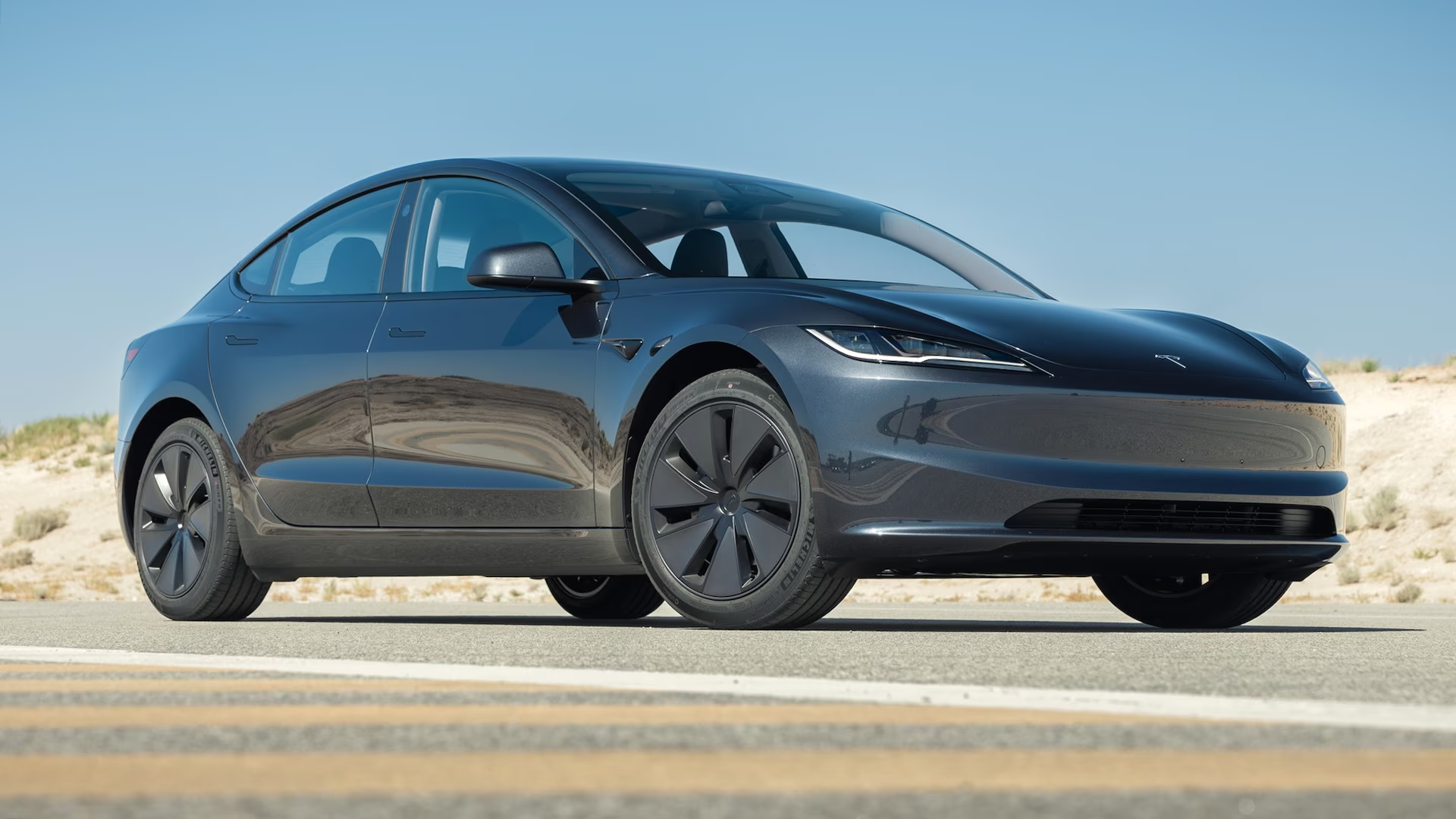When purchasing a new car, there are several factors that buyers typically consider—such as size, interior space, comfort, features, and performance. However, one crucial factor that can quickly turn a seemingly perfect vehicle into a regrettable choice is the cost of maintenance.
Whether you’re shopping for a sports car, a sedan, or an SUV, high maintenance costs can severely diminish the enjoyment of ownership. That’s why it’s essential to be aware of which new cars have the highest upkeep expenses within their respective categories before making a decision.
Vehicles With The Highest Annual Maintenance Costs
With that perspective, this article outlines ten new vehicles with maintenance costs so steep that they might make you reconsider buying them.
These cars span various segments and brands, but unsurprisingly, the majority are luxury vehicles known for their expensive service requirements.
Audi A8
The Audi A8 kicks off the list, with an average annual maintenance cost of $1,298 according to RepairPal.
Available with a range of engines—from a 3.0-liter twin-turbocharged V6 to a 4.0-liter twin-turbocharged V8—the A8 and its performance-oriented S8 sibling feature 8-speed automatic transmissions and reach up to 155 mph.
Power figures range from 282 hp to 563 hp, while torque spans from 443 lb-ft to 664 lb-ft. Despite its elegant design and understated luxury, the A8 tends to be overlooked in favor of rivals like the Mercedes-Benz S-Class, BMW 7 Series, or Bentley Flying Spur.
But even for those drawn to its discreet appeal, the A8’s maintenance costs may be a deterrent. With a RepairPal reliability rating of just 1.5 out of 5, and a five-year maintenance estimate of $3,536, owning this Audi can be expensive.
There’s also a 28% chance of a major repair within the first five years. Unless you’re particularly attached to the A8, choosing a competitor like the S-Class or 7 Series might offer a more cost-effective ownership experience.
The Audi A8 exemplifies all the core attributes expected of a full-size luxury sedan. It features a spacious and serene interior, a sophisticated yet understated exterior design, a capable powertrain, and a surprisingly nimble chassis.
Despite its merits, the A8 tends to operate under the radar compared to more high-profile rivals like the BMW 7-series and Mercedes-Benz S-class, which often receive greater fanfare.
The A8 is equipped with a single engine option—a 335-horsepower turbocharged V-6 enhanced by a 48-volt hybrid system. While this engine is smooth and quiet, both BMW and Mercedes offer more powerful turbocharged inline-six engines.
However, the A8 compensates with a significantly lower starting price than its German counterparts, making it a compelling value proposition even for luxury car buyers who are conscious of spending. The engine delivers ample performance for most driving situations, particularly on long and gently winding roads, thanks to its all-wheel-drive chassis.
Features such as dynamic all-wheel steering further enhance the car’s handling. For those who prefer more power and sportier dynamics, the high-performance Audi S8—reviewed separately—offers a turbocharged V-8 and a sharper driving experience.
For the 2025 model year, the Audi A8 receives several updates. The Black Optic package now includes newly designed 21-inch double-spoke bi-color wheels, black brake calipers, and blackout exterior trim.

Dynamic all-wheel steering is now a standard feature within the luxury package, and leather trim has been expanded to cover the dashboard and door panels. The Executive package has also been upgraded, now including Valcona leather upholstery, heated rear seats, a head-up display, and HD Matrix-design LED headlights.
The long-wheelbase A8 L variant comes standard with a heated steering wheel and 20-inch bi-color alloy wheels. Additional refinements include the repositioning of Homelink buttons to the rearview mirror and the introduction of a new Madeira Brown exterior paint option.
The 2025 Audi A8 starts at $93,295. As a flagship luxury sedan, it justifies its premium price with refined features and a high-quality build.
For added visual appeal and luxury, the Black Optic package is highly recommended—it includes high-gloss black exterior accents, black Audi badges, and the new 21-inch wheels. Comfort-enhancing options such as massaging front seats, heated armrests, and upgraded LED headlights elevate the driving experience further.
Those prioritizing rear-seat comfort should consider the Comfort Rear Seat package, which offers ventilated and massaging power-adjustable outboard seats, heated rear armrests, and a remote control for the entertainment system. The Executive package enhances driver assistance and convenience features with adaptive cruise control, lane-keeping assist, a head-up display, and remote parking.
Under the hood, the A8 is powered by a turbocharged 335-horsepower V-6 engine paired with a 48-volt hybrid system. While this is the only available engine for the A8, the more performance-oriented S8 features a 563-horsepower turbocharged V-8.
The standard eight-speed automatic transmission and all-wheel-drive system ensure smooth and confident performance. The engine delivers its 331 pound-feet of torque at a low 1,370 rpm, providing responsive acceleration without needing to push the car hard during normal driving.
Standard features like an adjustable air suspension and adaptive dampers contribute to the A8’s signature blend of ride comfort and sporty handling—an experience that transcends what raw specifications can convey.
Ford F-350 Super Duty
Following the A8 is the Ford F-350 Super Duty, a heavy-duty pickup truck with an average annual maintenance cost of $1,295. The F-350 is available with several potent engine options, including a 6.8-liter petrol V8, a 7.3-liter petrol V8, and a 6.7-liter turbodiesel V8.
All are paired with a 10-speed automatic transmission, and power ranges from 405 hp to 500 hp, while torque peaks at an incredible 1,200 lb-ft. Built for serious towing and heavy-duty work, the F-350 can haul trailers weighing up to 38,000 lbs when equipped with a fifth-wheel setup and the high-output diesel engine.
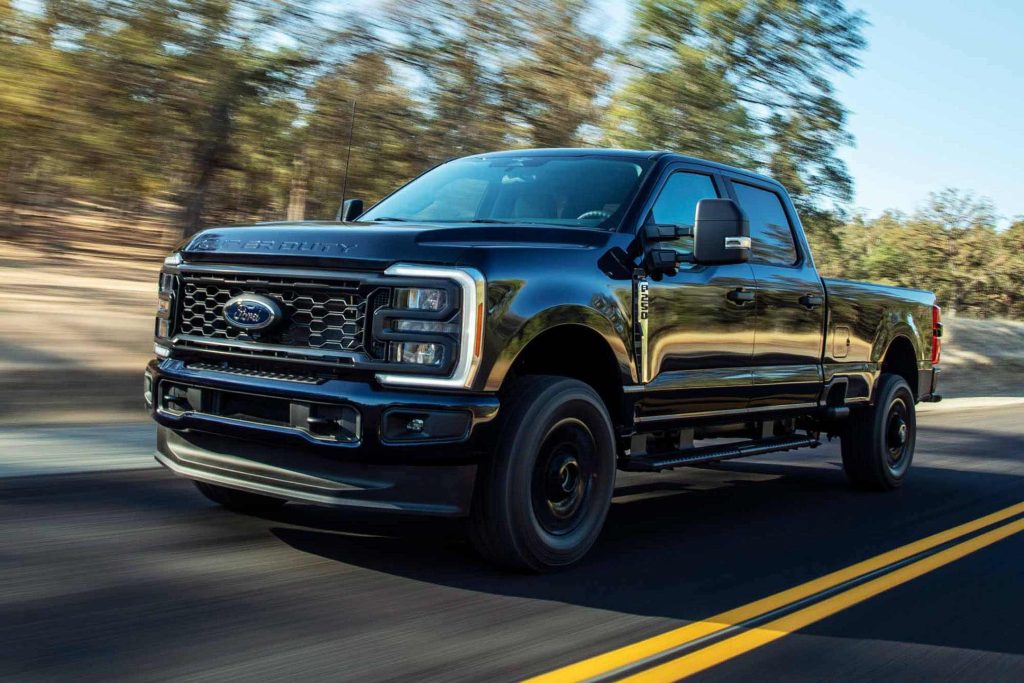
Although it delivers unparalleled capability, the F-350 also comes with significant upkeep demands. Owners can expect to spend about $5,028 over the first five years on maintenance and repairs, and there’s a 46% chance of encountering a major issue during that time.
While these trucks are known to have long lifespans if well cared for, the cost of ownership is undeniably high. For those who don’t need the truck’s extreme hauling capabilities, the more affordable and easier-to-drive F-150 may be a more practical alternative.
Land Rover Range Rover
The Land Rover Range Rover is arguably the most iconic SUV ever made. As the vehicle that kickstarted the luxury SUV trend, it continues to be held as the gold standard for what a premium SUV should embody.
However, alongside its prestige, the Range Rover carries a troubled reputation for reliability. Owners frequently report issues, leading to frustrating ownership experiences that sometimes prompt them to trade in their vehicles for more dependable alternatives.
The cost of ownership reflects this concern. According to RepairPal, the average annual maintenance cost is $1,258. Over the first five years, CarEdge estimates the total maintenance and repair cost at $6,784, with a 51% chance of a major repair occurring within that time.
These numbers highlight just how expensive it is to keep a Range Rover on the road. Even compared to other luxury SUVs, the Range Rover stands out for its high upkeep costs.
The 2025 Land Rover Range Rover offers a rare blend of premium luxury and serious off-road capability, making it a standout choice for those who want both attributes in a single vehicle. While many SUVs cater to either rugged terrain or upscale comfort, the Range Rover manages to do both with ease.
Its imposing exterior presence is matched by an exquisitely crafted interior that becomes even more lavish with added options. Ride quality is exceptionally smooth, effectively masking the vehicle’s true prowess on challenging terrain.
For those who do decide to go off-road, advanced drive modes handle much of the technical work, so extensive four-wheeling experience isn’t necessary. However, this level of luxury and capability comes at a price, with base models starting in the six-figure range.
That places it in direct competition with vehicles like the Mercedes-Benz G-class. Due to its exceptional balance of comfort and performance, the 2025 Land Rover Range Rover has earned a place on the Editors’ Choice list.
For 2025, the standard-wheelbase SE trim with the V-8 engine gains an upgraded Meridian surround sound system, although it no longer includes the Dynamic Response Pro active roll control as standard.
The 550e plug-in hybrid is now available with the standard-wheelbase body, although PHEV versions no longer offer the towing package or 23-inch wheels.
Additionally, the Autobiography trims in the PHEV range drop features such as tailgate seating and the full-size spare tire as available options.
Across the lineup, all models now come with illuminated treadplates, the Activity Key bracelet has been discontinued, and the Perlino white headliner no longer extends to the roof pillars.
Pricing for the 2025 Land Rover Range Rover starts at $109,725 and can climb to $210,825 depending on trim and features. The P400 SE starts the range, followed by the P550e SE at $121,525, and the P530 SE at $133,025.
The midrange Autobiography trims—P550e Autobiography and P530 Autobiography—are priced at $153,425 and $168,025, respectively. The range-topping P615 SV model commands $210,825.
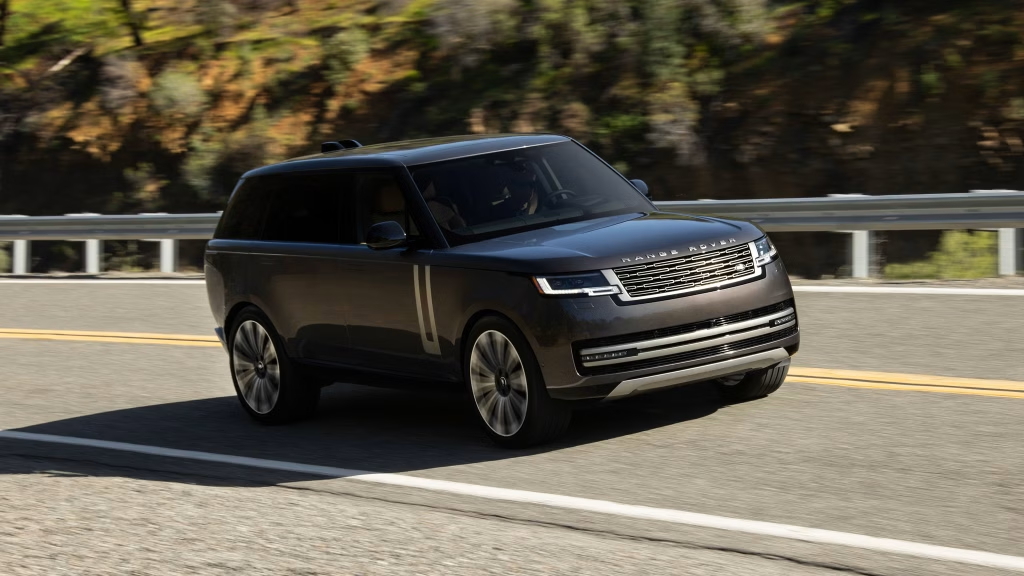
The Autobiography trim is particularly recommended due to its inclusion of luxury amenities such as a 1600-watt Meridian stereo system with headrest-mounted speakers and active noise cancellation.
The Range Rover comes in short- and long-wheelbase configurations, and the latter is preferable for those seeking more cargo space and the option of a third-row seat.
The Range Rover offers four distinct powertrains. The base P400 is a turbocharged inline-six paired with a 48-volt hybrid system, delivering 395 horsepower and smooth performance during testing.
The P530, a 523-horsepower twin-turbocharged 4.4-liter V-8, not only offers swifter acceleration but also increases the towing capacity to 8200 pounds.
The P550e plug-in hybrid produces 542 horsepower and is limited to the short-wheelbase model. The top-tier P615 SV variant features a 606-horsepower V-8. All versions ride on an adjustable air suspension, and in Comfort mode, the vehicle glides over roads.
Switching to Dynamic mode slightly firms up the ride, but the emphasis remains on luxury and ease. Off-road capability continues to be a strong suit, with standard features making the Range Rover trail-ready.
Performance testing shows impressive acceleration. The V-8-powered P530 achieved a 0–60 mph time of 4.3 seconds in short-wheelbase form, while the long-wheelbase P400 managed the same sprint in 5.5 seconds. Although the P550e has not yet been tested, Land Rover estimates it will hit 60 mph in 4.8 seconds.
In terms of electric driving, the EPA has yet to release official numbers for the P550e plug-in hybrid, but Land Rover estimates that its 31.8-kWh battery can provide up to 51 miles of electric-only range.
The P550e is compatible with DC fast charging and can also be charged at home. The battery is expected to recharge from empty to 80 percent in under an hour when using its maximum 50-kW charging rate.
Regarding fuel economy, the P400 is rated at 18 mpg city and 24 mpg highway, while the V-8 P530 achieves 16 mpg in the city and 23 mpg on the highway. During a 75-mph highway fuel economy test, both the P400 and P530 matched the 23-mpg rating.
Once the battery in the P550e is depleted, it is expected to return 21 mpg city and 22 mpg highway. For more detailed fuel economy figures, the EPA’s website offers comprehensive data.
Inside, the Range Rover delivers a luxurious experience with high-end materials such as fine leathers and wood trims.
Buyers who prefer sustainable options can select a leather-free interior that uses wool and other eco-conscious textiles. Seating configurations vary from four to seven passengers depending on the wheelbase and chosen layout.
Although the third row in the long-wheelbase version may not accommodate tall adults comfortably, it remains suitable for shorter passengers and children. An optional motorized cargo divider helps keep items secure, and the split rear liftgate can serve as convenient outdoor seating.
Short-wheelbase models offer up to 40.7 cubic feet of cargo space behind the rear seats, expanding to 83.5 cubic feet with the seats folded. Long-wheelbase variants provide a maximum of 92.8 cubic feet, though only 8.7 cubic feet is available with the third row in place.
Porsche Cayenne
The Porsche Cayenne holds a crucial place in automotive history. It not only popularized high-performance SUVs but also played a key role in rescuing Porsche from financial instability.
Its success paved the way for similar vehicles like the Lamborghini Urus and Ferrari Purosangue. Despite its achievements, the Cayenne is not a cheap vehicle to own. According to RepairPal, the average annual maintenance cost is $1,231.
Like most vehicles from the brand, maintenance is costly, but the Cayenne is particularly expensive, even by Porsche standards. This could be a deterrent for buyers looking for a performance SUV that won’t break the bank in upkeep.
While the Cayenne delivers excellent power, luxury, and driving dynamics, potential owners should be prepared for the financial demands that come with maintaining such a high-end vehicle.
No Cayenne is inexpensive to purchase, but some versions are significantly cheaper to operate than others, largely depending on whether you opt for a traditional petrol engine or one of the impressive hybrid models.
While this may matter less for private owners, if you use a Cayenne as a company car, the savings can be substantial—literally hundreds of pounds each month.
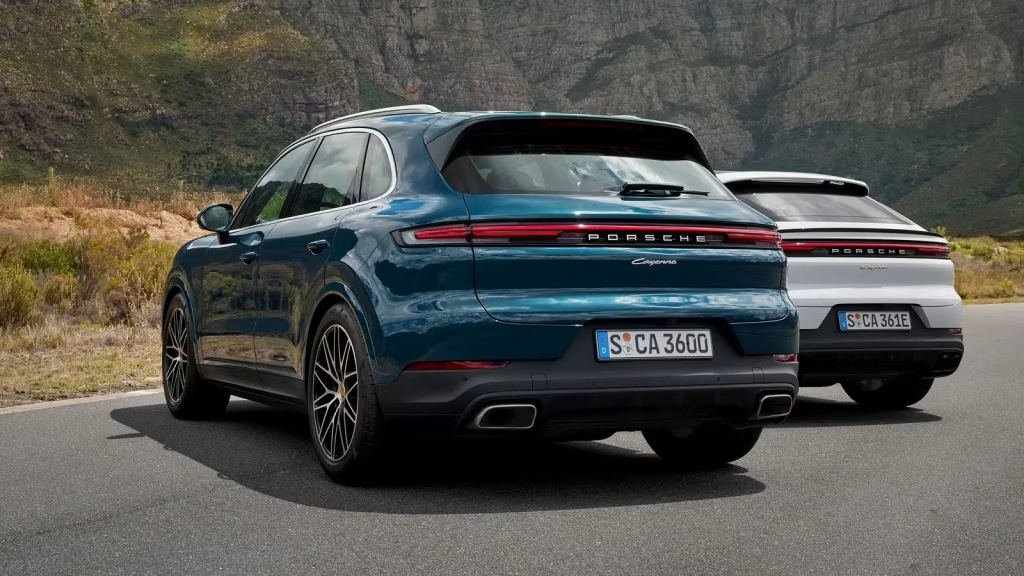
This means that the nearly £10,000 price difference between a base model and the E-Hybrid can essentially pay for itself through Benefit In Kind tax savings. These tax benefits are likely to have a greater impact on running costs than the potential fuel savings from the extended electric-only range.
However, if you make a habit of plugging in your vehicle every night using cheaper off-peak electricity, you might be able to complete daily tasks like the school run or commuting without ever needing the petrol engine to kick in.
5 Cars With The Lowest Annual Maintenance Cost
There’s a great deal to appreciate about cars that are affordable, dependable, and low-maintenance. This doesn’t refer to cheap cars in the outdated sense—those stripped-down vehicles that felt like punishment to drive.
The era of basic models outfitted with manual crank windows, bare rubber floor mats, and lacking air conditioning is largely a thing of the past.
Instead, the focus here is on genuinely good, inexpensive cars—vehicles that meet your practical and personal needs, perform reliably without fuss, and ask for little more than the occasional oil change and minimal maintenance.
This category includes small, fuel-efficient options like the Toyota Corolla, Nissan Versa, and Mitsubishi Mirage. However, the list doesn’t stop there. It also features several Tesla models, a Lexus, and even the performance-oriented Toyota Supra.
5. Toyota Camry
The Toyota Camry continues to be known for its low operating costs and dependable long-term performance. These qualities have solidified its place as a staple in the midsize sedan segment.
One of the notable distinctions of the Camry is that it remains among the few in its class to offer a V6 engine option alongside the standard four-cylinder. In terms of cost, the Camry’s 10-year maintenance expense is estimated at $4,203.
The first-year annual maintenance cost is projected to be $160, rising to $766 by the tenth year. Additionally, there is an 11.9% chance of the vehicle requiring a major repair within that time frame.
The 2025 Toyota Camry has been completely redesigned, marking the ninth generation of this popular midsize sedan. Toyota has made a bold move by making the Camry hybrid-only, eliminating the traditional gasoline-only and V6 engine options.
Every Camry now comes standard with a four-cylinder engine paired with Toyota’s latest hybrid system, producing 225 horsepower in front-wheel-drive models—a 17-hp increase over the previous Camry Hybrid and 22 hp more than the outgoing non-hybrid four-cylinder.
An optional all-wheel-drive system adds an electric motor to the rear, boosting total output to 232 horsepower. This redesign brings updated exterior styling and an upgraded interior featuring new technology such as an available 12.3-inch center touchscreen and a low-speed hands-free driving system.
The Camry continues to offer a quiet, roomy cabin and a smooth, composed ride, though some may notice a coarse engine sound under hard acceleration and find the front seat comfort lacking.

In terms of cost to drive, estimates based on 15,000 miles per year (with 55% city and 45% highway driving) and fuel priced at $3.13 per gallon in North Dakota, show the Camry LE costing about $76 per month, which is significantly less than the average midsize car cost of $160 per month.
The elimination of the “Camry Hybrid” name might cause some confusion, but the reality is that every Camry is now a hybrid, simplifying the lineup and offering better fuel efficiency and performance.
The Camry faces strong competition, most notably from the Honda Accord, which was redesigned in 2023 with smoother styling and a more upscale interior. Other rivals include the Kia K5 and Hyundai Sonata, both refreshed recently for the 2024 model year.
Together, their insights present a thorough overview of the 2025 Toyota Camry, emphasizing its efficient hybrid powertrain, modern features, and overall value.
4. Toyota Prius Prime
The Toyota Prius Prime stands out as the plug-in hybrid electric vehicle (PHEV) variant of the well-known Prius, offering an excellent middle ground between traditional gasoline vehicles and fully electric models.
It can travel up to 25 miles using battery power alone before switching to hybrid mode, where it delivers an estimated 54 mpg in combined city and highway driving.

The Prius Prime also shines when it comes to cost-efficiency, with an estimated 10-year maintenance cost of $4,098. Maintenance expenses start at $164 in the first year and grow to $736 by year ten. The likelihood of experiencing a major repair within the first decade is 11.2%.
3. Toyota Corolla
The Toyota Corolla remains a top choice for practical-minded car buyers, offering consistent reliability and solid fuel efficiency.
While it may not turn heads with its styling or performance, it excels at delivering exactly what most people need from a compact car. Over a 10-year period, maintenance costs are estimated at $4,087.
In the first year, you can expect to pay about $148 in maintenance, with that figure increasing to $755 by the tenth year. The probability of the Corolla needing a major repair within ten years is 11.9%.
The 2025 Toyota Corolla, available as both a sedan and a hatchback, is a dependable daily driver that may lack excitement but excels in practicality. It offers an attractive low price point, excellent fuel efficiency, a wide array of standard features, and a comfortable ride.
Among its advantages are its great fuel economy, strong value proposition, smooth ride, and generous list of included features. On the downside, the Corolla’s powertrain feels wheezy, cargo space is unimpressive, and the back seat is cramped.
For 2025, the Corolla introduces a new sport-styled FX trim and seats five passengers. It delivers fuel economy estimated at 30 to 32 mpg in the city and 38 to 41 mpg on the highway, operates with front-wheel drive, and is powered by a 169-horsepower engine.
Ranked #5 in the Compact Cars category, the 2025 Corolla is also a finalist for the 2025 Best Compact Car for the Money award. Its score of 8.6 out of 10 is based on comprehensive research and data from 39 sources.
The Corolla ties for fifth place in Compact Cars alongside the 2025 Subaru Impreza, trailing competitors like the Mazda3, Honda Civic, Hyundai Elantra, and Kia K4.
In terms of driving performance, the 2025 Corolla delivers a smooth and mostly comfortable ride.
While its handling isn’t sporty, it remains competent, and braking feels natural. The sole engine option is a 2.0-liter four-cylinder producing 169 horsepower and 151 pound-feet of torque.
Acceleration is leisurely, taking about nine seconds to reach 60 mph, and passing at highway speeds requires effort. The engine can be loud under heavy acceleration. The Corolla comes equipped with front-wheel drive and a continuously variable automatic transmission (CVT).

Fuel economy ratings are strong for a compact car, with the Corolla estimated to achieve 30 to 32 mpg city and 38 to 41 mpg highway. For those seeking even better mileage, the Corolla Hybrid is an alternative, reviewed separately.
Inside, the Corolla features two rows of seating for five passengers. The front seats are spacious and easily adjustable even without power options, while the rear seats offer support but have limited legroom and headroom, particularly in the hatchback model.
Cargo space is below average for the class, with 13.1 cubic feet in the sedan’s trunk and 17.8 cubic feet in the hatchback’s rear area. Folding down the rear seats expands cargo capacity to 23 cubic feet.
The Corolla scores well for value, benefiting from an affordable estimated total cost of ownership and competitive pricing across trims. Safety ratings are also impressive, with strong scores from the National Highway Traffic Safety Administration and the Insurance Institute for Highway Safety.
Standard safety features include traffic-sign recognition, pedestrian and cyclist detection, and two complete sets of LATCH connectors for child safety seats in the rear outboard seats, along with a tether anchor for the middle rear seat. The IIHS rated this LATCH system Good+, reflecting its ease of use and versatility.
Reliability predictions rate the 2025 Corolla at 79 out of 100, which is considered average by J.D. Power standards. While its critics’ rating stands at 7.3 out of 10, slightly below average for its class, this rating reflects the overall sentiment and recommendations from automotive reviewers.
Pricing details for the 2025 Corolla sedan have not yet been fully released, but the sedan versions of each trim are expected to cost about $1,000 more than their hatchback counterparts.
The new sporty Corolla FX’s pricing is still pending. The base Corolla LE starts around $22,000 and includes an 8-inch touchscreen, wireless smartphone integration, and adaptive cruise control.
The SE hatchback begins at $23,630 and adds features like front sport seats, a leather-wrapped steering wheel, push-button start, and proximity keyless entry. The top-tier XSE trim, priced at $26,930, offers synthetic leather upholstery and a moonroof among its amenities.
2. Toyota Prius
The Toyota Prius hybrid remains one of the most fuel-efficient vehicles available, delivering an EPA-estimated 58 mpg in the city and 53 mpg on the highway. In addition to its exceptional fuel economy, the Prius offers owners the benefit of low maintenance and repair expenses.
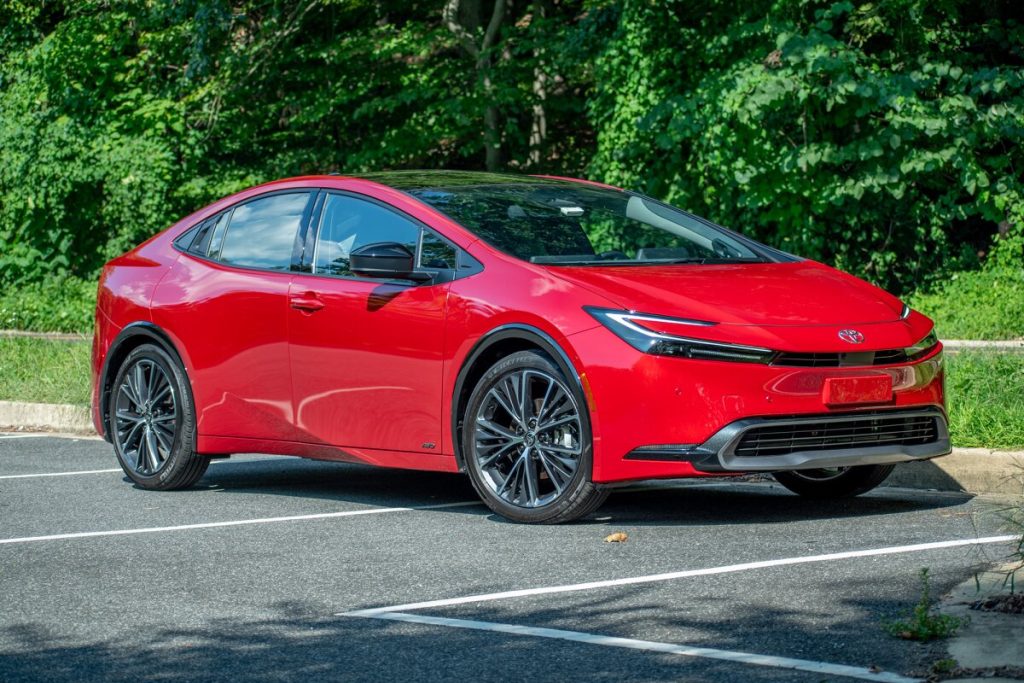
Over a 10-year period, the total maintenance cost is estimated at $4,008. In the first year, owners can expect to pay about $155 for maintenance, with that figure increasing to $727 by the tenth year. The chance of requiring a major repair within this timeframe is 11.2%.
1. Tesla Model 3
The Tesla Model 3, which is more compact than the larger Model S, boasts the lowest anticipated maintenance and repair costs of any vehicle currently on the market. The majority of routine service visits are minimal, often consisting of little more than tire rotations.
Over a 10-year span, the Model 3’s total maintenance cost is projected at $3,587. First-year maintenance expenses are approximately $169, rising to $610 by year ten. The likelihood of needing a major repair within ten years is just 8.6%.
The Tesla Model 3 has firmly established itself as a popular family car, standing alongside the VW Golf and Nissan Qashqai as favorites among parents managing the school run.
In 2023, the Model 3 underwent a thorough update featuring sleeker, sharper exterior styling, improved interior refinement, and, most importantly, the introduction of longer-range variants.
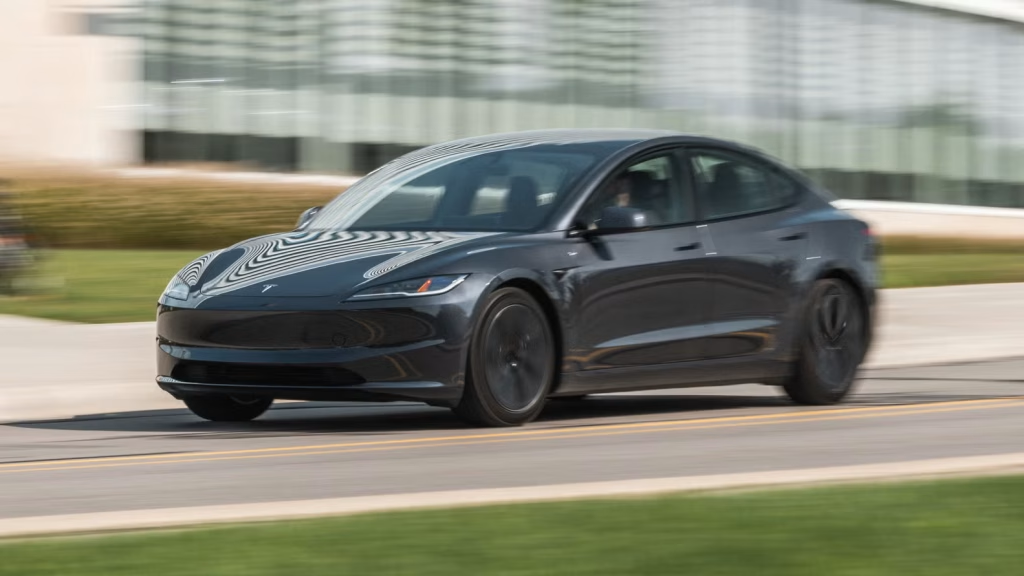
The Model 3 offers a highly appealing electric alternative to competitors like the BMW 3 Series and Audi A5, as well as electric models such as the Hyundai Ioniq 6 and Polestar 2.
The Model 3’s role in the family saloon segment is comparable to the iPhone’s impact on the mobile phone industry: it has fewer physical buttons, more screens, and carries a distinct status symbol.
Unlike an iPhone, however, the Tesla Model 3 boasts impressive battery life regardless of the version you choose. The Long Range Rear-Wheel Drive Model 3 truly shines on long journeys, with Tesla claiming it can travel approximately 436 miles on a single charge—making it one of the longest-range electric vehicles available in the UK.
Despite its impressive range, the Model 3 remains considerably more affordable than other long-range EVs. Its appeal isn’t just about value for money; the latest Model 3 sports slim headlights and C-shaped taillights, giving it an even stronger, more distinctive identity than when it first launched.

